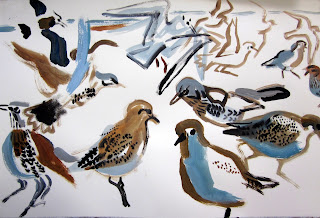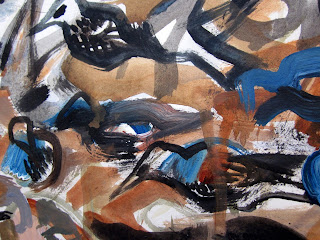The grass is still growing and even here, where wind removes leaves before they turn colour, there are still flowers: Red Campion and Hemp Nettle I noticed in the weed patch where the vegetables grew, and already the European Gorse has abundant blossom, which had attracted a Painted Lady just at the beginning of this week above Nantmor in Snowdonia, on a sunny South-facing slope of small Sessile Oak, Birch, Holly, streamside Sphagnum and Rush.
At home we have been seeing queen Bumble Bees about, taking advantage of late sun.
But thinking back to the summer, our sunny, dry summer, it was the presence once again of Hares in our immediate neighbourhood which was a highlight.
First, there were leverets: at least two teenaged hares to be seen in a reseeded field down the lane. After strolling part-way to meet the school minibus with Robs it was possible to watch them browsing and preening in viridian Ryegrass and acid yellow Wild Turnip. One of them lolloped up the track and into our drive ahead of me. I crawled after it, so convincingly non-human that it came sniffing and nibbling towards me, before hopping at the last minute into the patch we left to grow ungrazed for clover and trefoils. The morning sun shone ruby through its ears and through the frill- edgings of sorrel flowers.
Later in the year we would sometimes encounter the adults on Trwyn Bychestyn among the anthills clothed in Thyme.
This is a monoprint after notebook drawings.

























